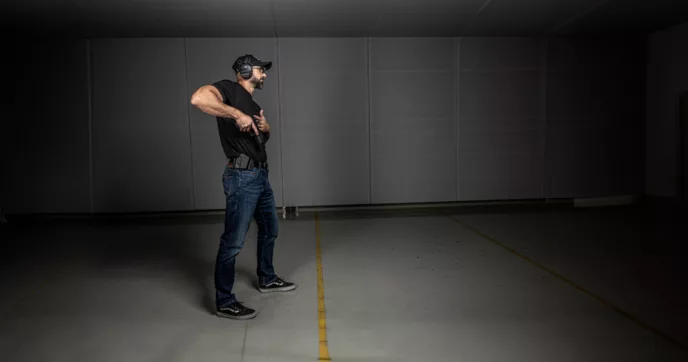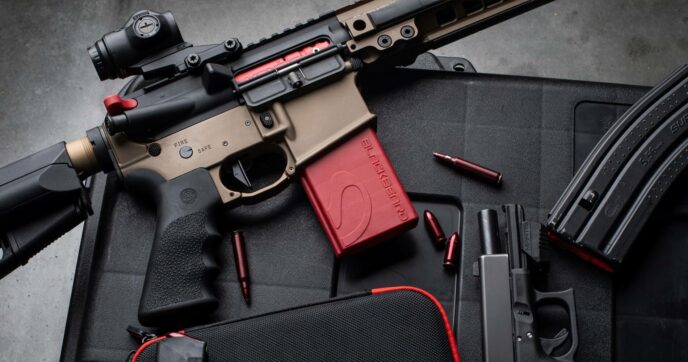August is National Shooting Sports Month, celebrating all the best parts of our favorite activity: blasting holes in paper or making steel sing. While there are plenty of things to celebrate, the focus is first on all the new shooters out there who are helping our community grow and thrive. Nothing is more important to shooting sports than fresh faces, as gun-ownership hinges on spreading a positive mindset. You might have people in your life that are on the cusp of becoming shooters, but how can you help them take those next steps?
Everybody has a story behind their introduction to firearms. Some start on hunts with parents or family. Some learned marksmanship in scouts or at summer camp. In my case, it came while eating a double cheeseburger at Sutton’s Drug Store in Chapel Hill, North Carolina.
Sutton’s was a popular hangout for the local university’s fraternities and student clubs, including the Tar Heel Rifle and Pistol Club (THRPC). Despite campus politics, THRPC was one of the largest dues-paying groups on campus, with an email list stretching over 1000 members. THRPC’s membership was close-knit and supportive to the core, meeting monthly at a local range to teach new shooters the fundamentals of marksmanship. When I joined THRPC, I was a sophomore with almost no real firearms experience. I didn’t know how to shoot a pistol or an AR15 or anything beyond the basic teachings of childhood summer camp. But with graceful instruction, the club’s leadership taught me the ropes, which led to my current love of guns and gear.
For many shooters, this story might sound familiar. The first range trip is a critical step. Much like a handshake, it sets a first impression, which will establish an image of shooting and gun-owners as a whole. With all the divisiveness surrounding firearms culture, setting a good first impression can be challenging, but experience and education are the only way to overcome negative preconceptions. Every shooter contributes to the reputation of gun-ownership, so we must always do our best in presenting a faithful image of our community.
If you’re planning to take someone out for their first range trip, etiquette is everything. From my experience with THRPC, I’ve learned that there are 5 major guidelines to give every new shooter the best experience possible. Follow these, and you will have done your part in earning a good name for gun-owners.

Safety First—Comfort Second
This should go without saying, but we’ll say it anyway just to be very clear: safety always comes first.
The first hurdle any shooter must overcome is the anxiety of handling a potentially dangerous weapon. Without calm, clear guidance, a new shooter can feel overwhelmed by information. Too often, experienced shooters overestimate a new shooter’s comfort level.
Remember, without experience, a gun can seem a strange device. Every button and lever has purpose, and memorizing the controls takes time. The best approach is to take a step back and prioritize the 4 main rules of safe firearms handling:
- All guns are always loaded.
- Never point a gun at anything you aren’t willing to destroy.
- Keep your finger off the trigger until ready to shoot.
- Know your target and what’s behind it.
If you obey these 4 rules, you’ve already minimized the chance of injury. To reduce the chance of any accidents, set defined protocol for unloading and clearing firearms. That way, if the new shooter has a question or malfunction, they know how to return to a safe position without compromising safety.
You also have to pay attention to the more common gun range boo-boos. Slide-bite, scope-eye, bruised shoulders, and brass burns are all common for new shooters, which is understandable. Most responsible adults understand the danger of muzzle flagging, but few will see the danger of a low-cut V-neck. Like a law of nature, hot brass will always find its way into loose clothes. While the burns themselves sting, an unexpecting shooter might jump or drop their gun in surprise. Make sure your new shooter dresses appropriately for their own protection—and for the protection of those around them.
In the same vein, be sure they have good hearing and eye protection. Gunfire is louder than a new shooter expects, especially at an indoor range, where muzzle blast is confined. A good set of ear muffs might make it harder to communicate, but the difference in shooter comfort is noticeable. Personally, I always tell first time shooters to double up, wearing both foam earplugs and earmuffs. This almost completely negates the jolt caused by muzzle blast, even when using muzzle brakes.
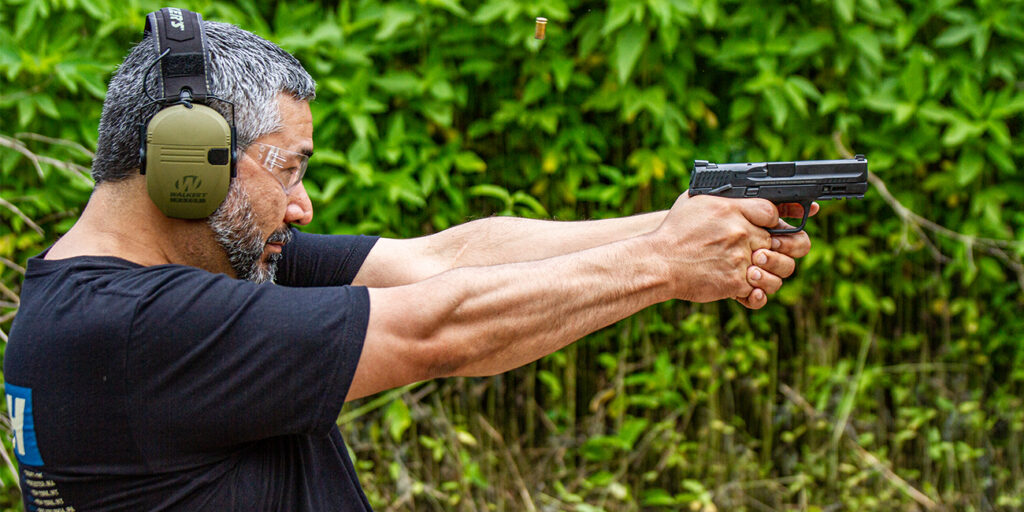
Slow and Steady Wins
A first-time shooter needs time to memorize the basics. As we mentioned, there are a lot of potential hazards from mishandling a firearm, and some are not obvious. Everyone has seen a new shooter grip a handgun with a thumb behind the slide. New shooters should learn to load, fire, and unload a firearm without hurting themselves or breaking any safety rules.
The best approach is to practice the basics at home with dummy ammo, so they’ll be ready once they get to the range. A-Zoom’s Snap Caps are aluminum cartridges that you can use to show loading a magazine or chambering a round without the risk of a negligent discharge. Snap Caps are also great for malfunction clearance drills, so even experienced shooters will get a lot of use from them.
Once you get to the range, start your new shooter off with the smallest, quietest calibers and move up as they grow accustomed to recoil. If you have a .22lr, your guest can plink away with cheap ammo and minimal recoil, so you can focus on refining their technique. If you don’t own a .22lr, fear not: conversion kits are easily installed into any .223/5.56-caliber AR15. After the new shooter is comfortable and consistent in loading, manipulating, and firing your simplest firearms, you can move them to the larger calibers and distances.

Help. Don’t Hassle.
There is a fine line between instruction and command, but the resulting impression is very different. No one wants to feel belittled for not knowing something, especially when they’re new. Patience is a virtue, and as the primary instructor, your leadership is important.
Don’t harp too much on the negatives. Guide them into good form with positive instruction, saving strict command for situations where safety may be compromised. Everyone makes mistakes, but if they’re safe and reasonable, there’s no reason to issue constant corrections. If you’re always ‘fixing’ the minutia of a new shooter’s technique, they’ll come away feeling incompetent. Here, pre-range practice can make a huge difference. By establishing grip, stance, sight picture, and trigger squeeze at home, the new shooter will need less reinforcement during range day.
When you help your shooter adjust, make sure you provide a complete explanation, preferably with demonstration. Instruction is best handled in blocks between magazines, rather than trickled between every shot. This also helps the new shooter stay focused, so they never feel too overwhelmed.
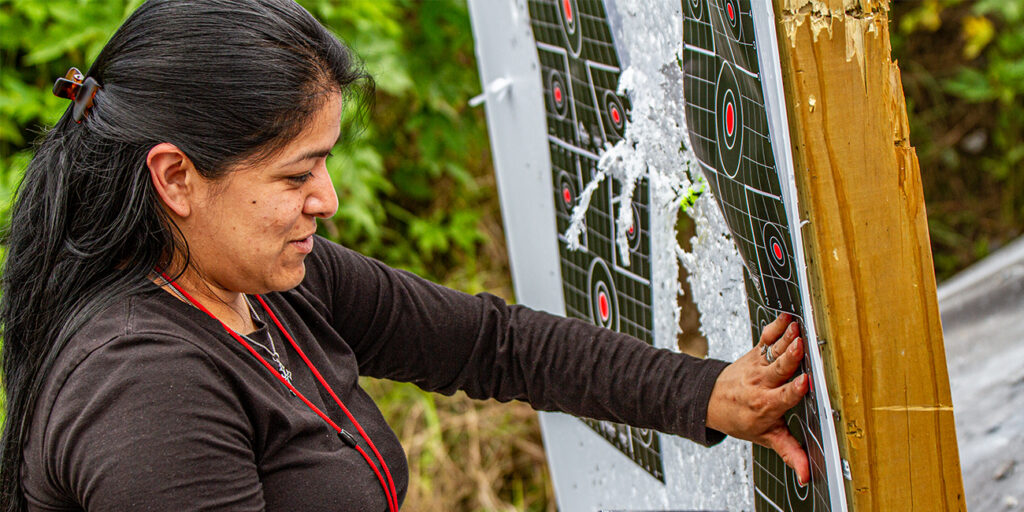
Make Success Attainable
Did we mention that shooting is hard?
In many ways, shooting is like golf, where even slight muscle twitches can throw a shot far off-course outside 100 yards. That said, would you start a new golfer out on a 600-yard par 5? No way!
New shooters should start with big targets set at close distances. If the new shooter isn’t hitting paper, move the target closer until they can see where their shots land. Few things are as disheartening as leaving the range without ever hitting the bullseye. Though safety and familiarization take priority, you should provide your new shooters with a reasonable goal, even if it’s just hitting center mass on a nearby silhouette.
The fun of shooting comes from the sense of progression, as each group creeps closer to center. Both new and experienced shooters should come away with a sense of achievement, no matter how humble it may be.
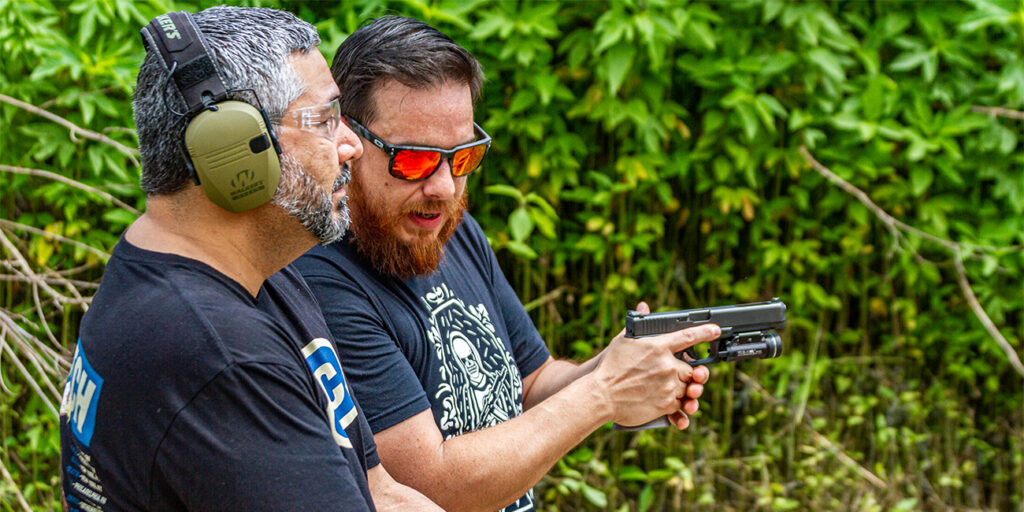
Remain their Guide.
Your new shooter will have a lot of questions, both before and after the trip. Hopefully, these questions come with genuine excitement for the sport, where they’ll be looking to you for guidance. This might come in the form of asking about different rifles or brands. Politics are unfortunately an unavoidable subject, so tact will be critical.
Be a gracious guide. Listen carefully to their questions and consider their mood as a barometer before you form your response. If they ask a question you can’t answer, don’t be afraid to admit it. You can use it to start a discussion and get them engaged in the subject matter.
Whatever you do, stay positive. If you have strong opinions about products or brands, you should recommend them, but don’t bash the competition too hard. Part of the fun in learning about firearms is exploring all the different options. Too much negativity will create the impression that they’ll be judged for every decision, leading to indecision and deterring them from ever taking that next step.
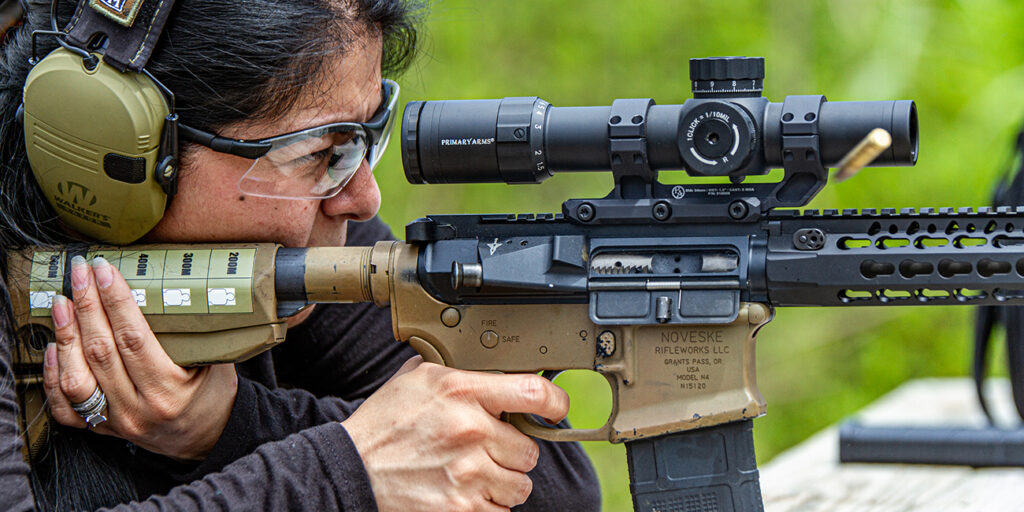
As someone who only got into shooting because of a club’s friendly instructors, I cannot overstate the significance of a guide. There is a lot of misinformation floating around, and your experience can establish a lot of trust and confidence in a beginner.
Best of all, there has never been a better time to get someone started, as National Shooting Sports Month is right around the corner. Ranges around the country will be hosting special events and offers, so be on the lookout for an opportunity to share the sport with someone new. Remember: the etiquette we establish in this generation of new shooters will carry into the next and so on.
So be mindful. Be graceful. And, above all, have fun.
